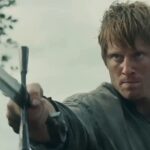The series follows lions, tigers, penguins, chimpanzees, and painted wolves as they struggle to survive and perpetuate their bloodline.
“Dynasties” is a new breed of nature documentary. With drama this thrilling and gut-wrenching, it’s not for the faint of heart. More intense than “Planet Earth,” “Dynasties” sticks with one animal family per episode to follow their heartbreaking fates and triumphant fortunes.
“It’s a very different editorial approach,” says longtime nature program narrator Sir David Attenborough. “The thought was we’ll watch them over the next two-and-a-half years and show you exactly what happens. We won’t fiddle around with it; we will show the action as truthful as we can.”
These are cutthroat stories of survival that have the highest of stakes. Yes, these are actual creatures who live and die in the wild, but also each of the animals featured on the BBC-produced series is on the endangered species list. If a real, concerted effort isn’t made to protect them, “Dynasties” could be one of the last chances to marvel at these creatures before their bloodlines are wiped out forever.
The BBC and BBC America used pop culture references to draw parallels to the level of drama, with this promo below mimicking the “Game of Thrones” main title sequence.
“When you play the game of thrones, you win or you die.” – #Dynasties@gameofthrones returns 2019 pic.twitter.com/zhI3wcFGRU
— BBC Earth (@BBCEarth) November 15, 2018
“Dynasties” is a narrative balancing act, combining all the action and unexpected reversals of fortune of scripted drama with the awe-inspiring real footage from years embedded in the wild. Following lions, chimpanzees, tigers, painted wolves, and emperor penguins, the episodes are the product of careful planning, technical innovation, dedication, and a bit of luck. Producer Mike Gunton breaks down the many ways the series’ filmmakers were able to capture these five harrowing tales:
1. Channel George R.R. Martin:
Relatives turn on each other in a fight for supremacy. A family mourns one of their own to a sudden, tragic fate. Lovers perish together on the battlefield. A matriarch paves the way for her offspring to flourish.
While these could describe any plot in “Game of Thrones,” they’re actual stories seen in “Dynasties.” When choosing which endangered animals to spotlight in the series, BBC approached it like any Hollywood movie or TV show: It sought bankable stars with a compelling story.

“Dynasties”
Screengrab/BBC America
“I wanted animals that people would enjoy watching, just for their own sake,” said Gunton. “When I started this, I was thinking, ‘I’m going to have to ask people to commit to an hour.’ They’re used to seeing a ‘Planet Earth’ where they’re seeing 10 different stories in an hour, where there’s going to be one story in an hour here, so they need to be an animal that people are intrinsically fascinated by, or attracted to: box-office animals.”
From a storytelling perspective, fairly well-studied animals were used so that experts were able to predict what type of drama their stories would entail.
“If we decided we’re going to do tigers, the question was: Which tigers are we going to feature?” said Gunton. “We want to do a tiger that we know is going to have cubs. Let’s talk to the experts and find the habitat or a location where they’ve got a tiger that they know is going to have cubs.”
And of course, any self-respecting drama balances its main story with a supporting one. Gunton said, “The final question is: Is there enough B-story as well to support it? Are there other characters?”
2. Bend the Knee, aka Respect Your Stars

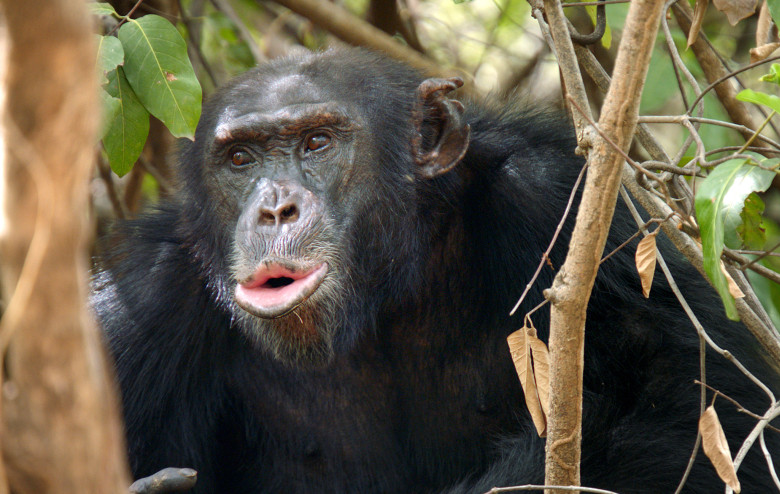

“Dynasties”
Screengrab/BBC America
Wildlife filmmakers must get close enough to their subjects to capture the action while also respecting their space and not affecting their behavior. Animals who were used to being studied were ideal because they were habituated to humans lurking around with cameras as long as those humans behaved in a predictable, unthreatening way. Much like reality shows, after a while it’s easy for those being filmed to forget the cameras.
“There are field workers with those chimpanzees every single day, so humans are something that are part of their lives. They see them as weird walking trees or something. They just didn’t pay any attention to them,” said Gunton.
However, if the crew had to return after a long absence, David — a chimpanzee who has been the alpha of his group for twice as long as usual — would remind them of the proper hierarchy before going about his business. “He would do a some kind of ‘I am David’ display. ’Oh, yeah, I remember you guys. Just to remind you, I’m in charge here. Stay out of my way and there’s no problem.’”
The painted wolves range over large areas of land so although they were habituated to the humans who were filming them, new humans were less likely to cross their path and therefore were treated with suspicion.
“I went out there myself with David [Attenborough] to film the introduction of each episode. The painted wolves definitely would behave differently to the people they knew, compared to us. The people who they were familiar with, they ignored completely, and they would ignore us if we were with them, but if got the vehicle alone, you’d notice that they’re beginning to slightly change their behavior. So you step back, and then you get back in the vehicle, and then it’s all fine. So you’re constantly measuring; your antennae are twitching the whole time.”
While approaching the animals was against protocol, many of the creatures were inquisitive and approached the film crew. “We managed to get some extraordinary materials from the emperor penguins when they just literally came and stood in front of the camera and did their thing.”
3. Play the Game of Drones

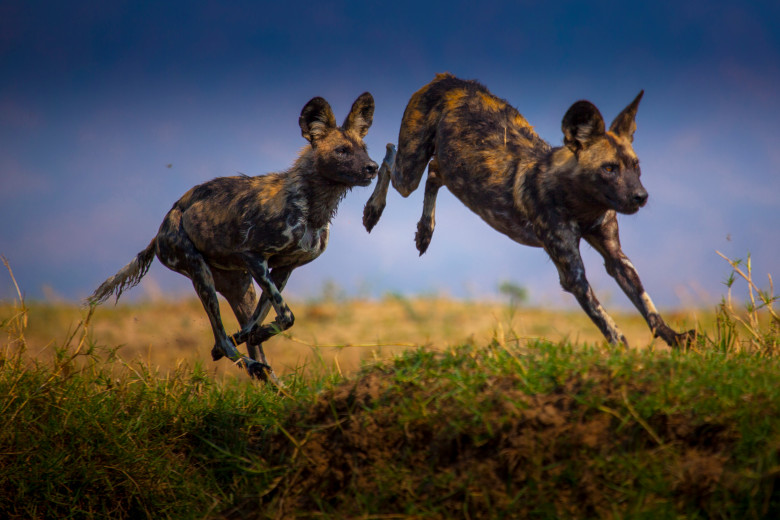

“Dynasties”
Nick Lyon/BBC America
In the painted wolf film, the matriarch Tait ruled her pack but was ousted from her den and hunting grounds by her own daughter, Black Tip. Painted wolves hunt over vast areas of land, which meant that sometimes the crew couldn’t keep up or lost them altogether. Unmanned aerial cameras, aka drones equipped with cameras, were used to track these actions.
“Because that’s a battle-of-armies story, you need to get that aerial perspective to see the relationship of the animals in the landscape,” said Gunton. “With the amount of time we needed to do that and the habitat we were working in, that would have been very difficult to do with helicopters. Starting with ‘Planet Earth II,’ drones were the big, new thing for filming, now you can deliver your groceries with them. Nevertheless, we were able to use them a lot and very effectively in the painted wolf film to get that sense of the pack moving, the pack hunting, the pack interacting with each other, and get that lovely perspective.”
4. The Night Is Dark and Full of Cameras

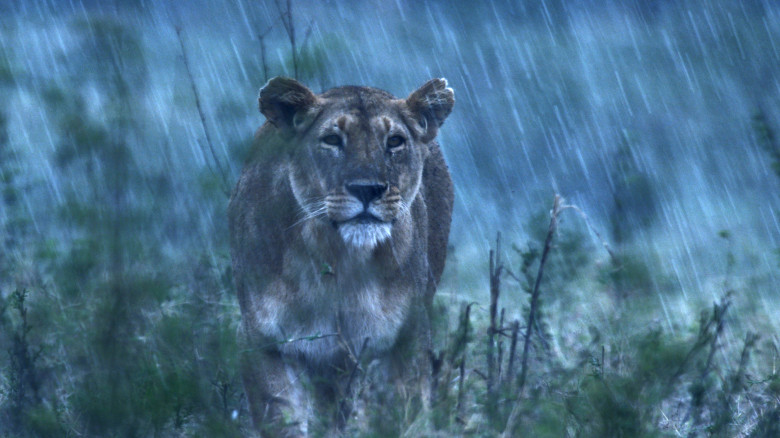

“Dynasties”
Screengrab/BBC America
With predators like the lion and painted wolf, much of hunting and activity occur just as the sun goes down and even at night. The crew used three different kinds of cameras to capture the action: cameras for when the sun is about to rise or set, light-sensitive cameras for moonlit scenes, and thermal cameras for full dark.
“In the painted wolf film, we chose a particular type of camera, in which the chip is very sensitive in that crepuscular light, that dawn and dusk light,” said Gunton. “Because of the sensitivity of the cameras, and the particular way they respond to the light, it looks like daylight. So we were able to film probably another two hours in the day.”
BAFTA-winning producer James Brickell had helped to developed the thermal cameras used to create the crisp imagery seen in the lion and painted wolf episodes.
“We had thermal cameras, but they were never photographically very aesthetically pleasing,” said Gunto. “He took it on himself to try and work with a company to make those cameras not just sensitive, but also deliver an aesthetic image. We took that on ‘Planet Earth II’ in a number of sequences — the leopards in Mumbai, for example. Then we took it to another level for the painted wolves.”
5. Recording a Song of Ice and Fire

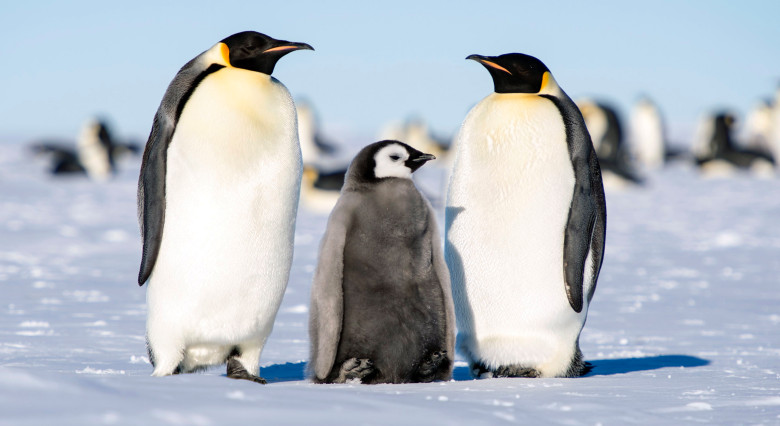

“Dynasties”
BBC America
In the emperor penguins episode, the crew wanted to capture a hazardous practice that had never been filmed in its entirety before. These penguins would gather at the Atka Bay, Antarctica just as all the other animals had left the continent for the winter to raise the next generation of emperor penguins in the absence of predators. Although the penguins don’t need to fear being eaten, the chilly conditions and storms are another serious threat. The human crew found themselves also at the mercy of freezing temperatures, whiteouts, and failing equipment.
“The trouble is that the cameras, the batteries, and everything starts to misbehave slightly when they get super, super cold,” said Gunton. “One of the biggest challenges is thermal shock — going from hot/warm to cold/cold to warm — and particularly for cracking lenses just not being able to cope.
“But funny thing is the same thing happens to the humans. Their brains start to slow down. There’s a great moment there where assistant producer/director Will Lawson has tried to record a video of himself where he’s talking about what it’s like. You can see his brain just can’t quite work at normal speed. It’s terrible.”
Shooting in Senegal for the chimpanzee episode was a completely opposite challenge with temperatures soaring well into the 100s. When a fire broke out, safety took precedence over capturing the action.
Gunton said, “Fire’s a funny thing actually, because it’s a bit like a crocodile. You keep your eye on it, you think it’s fine, and it’s not moving, and then suddenly you think, ‘When the hell did that get there?’ and suddenly you’re surrounded by it. You have to keep your wits about you.
“It was a very, very, very hot air in the dry season and with a fire on top, you’re stressing your body quite significantly. You have to be very careful not to dehydrate. And obviously you have to make sure you don’t set the camera on fire or get to close and melt something. But you can at least get out of the way.”
6. Set a Trap

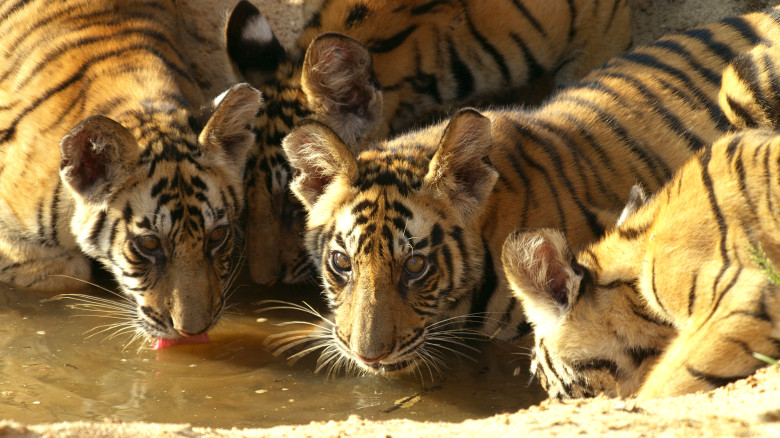

“Dynasties”
Screengrab/BBC America
In the tiger episode, filmmakers had to gain access to the Bandhavgarh Tiger Reserve in India. They followed the tigress Raj Bhera, who had just given birth to four cubs, which meant that crews couldn’t get too close. Hidden cameras with remote controls and the camera traps that have a trigger to detect movement were used to capture the action.
“This is a way of dealing with animals, like the snow leopard in ‘Planet Earth II,’ that would not tolerate the proximity of people, particularly in places like a waterhole, where you would never be able to get close to them,” said Gunton.
“Again, cats being so inquisitive and they’re not stupid, they work it out. They take a while to sort of get used to it and they bat them around sometimes, and pick them up and throw them in the water. But then they get bored, and then they just ignore them.”
7. Get Into the Swing of Things

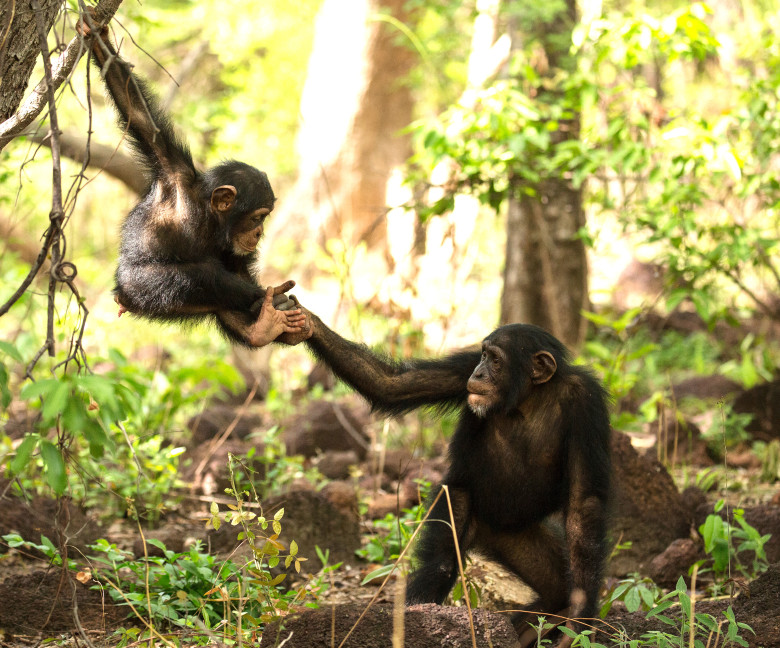

“Dynasties”
Mark MacEwen/BBC America
The film crew used an updated version of the gyro-stabilized camera used in “Planet Earth II” to keep up with the action of David and his chimpanzee troupe through the trees. They couldn’t get too close, however, for safety reasons and to prevent transmitting diseases.
“These gyros on the cameras keep these relatively big lenses steady, so you feel like you’re moving smoothly with them,” said Gunton. “By modifying and adapting and evolving the cameras, we have a lightweight gyro-stabilized cameras we were able to take off the tripod so you get a sense that you’re with the animals, you’re not static. We also used slightly longer telephoto lenses, so it gives the sense of being much more in their world.”
”Dynasties” premieres Saturday, Jan. 19 at 9 p.m. ET, simulcast across BBC America, AMC, IFC, and SundanceTV. The series will kick off with “Lion,” followed by “Chimpanzee,” “Tiger,” “Painted Wolf,” and “Emperor Penguin” each subsequent Saturday.
Sign Up: Stay on top of the latest breaking film and TV news! Sign up for our Email Newsletters here.



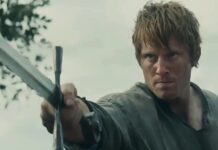
















![[Book Review] The Blade Itself (The First Law Trilogy) by Joe Abercrombie](https://bendthekneegot.com/wp-content/uploads/2018/01/1516047103_maxresdefault-218x150.jpg)








